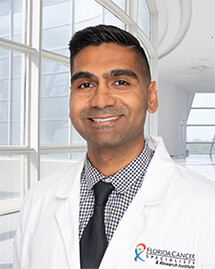Author(s): Sapna P. Patel, M.D., Megan Othus, Ph.D., Yuanbin Chen, M.D., Ph.D., G. Paul Wright, Jr., M.D., Kathleen J. Yost, M.D., John R. Hyngstrom, M.D., Siwen Hu-Lieskovan, M.D., Ph.D., Christopher D. Lao, M.D., M.P.H., Leslie A. Fecher, M.D., Thach-Giao Truong, M.D., Jennifer L. Eisenstein, M.D., Sunandana Chandra, M.D., Jeffrey A. Sosman, M.D., Ph.D., Kari L. Kendra, M.D., Ph.D., Richard C. Wu, M.D., Ph.D., Craig E. Devoe, M.D., Gary B. Deutsch, M.D., M.P.H., Aparna Hegde, M.D., Maya Khalil, M.D., Ankit Mangla, M.D., Amy M. Reese, M.D., Merrick I. Ross, M.D., Andrew S. Poklepovic, M.D., Giao Q. Phan, M.D., Adedayo A. Onitilo, M.D., Ph.D., Demet G. Yasar, M.D., Benjamin C. Powers, M.D., Gary C. Doolittle, M.D., Gino K. In, M.D., M.P.H., Niels Kokot, M.D., Geoffrey T. Gibney, M.D., Michael B. Atkins, M.D., Montaser Shaheen, M.D., James A. Warneke, M.D., Alexandra Ikeguchi, M.D., Jose E. Najera, M.D., Bartosz Chmielowski, M.D., Ph.D., Joseph G. Crompton, M.D., Ph.D., Justin D. Floyd, D.O., Eddy Hsueh, M.D., Kim A. Margolin, M.D., Warren A. Chow, M.D., Kenneth F. Grossmann, M.D., Ph.D., Eliana Dietrich, Victor G. Prieto, M.D., Ph.D., Michael C. Lowe, M.D., Elizabeth I. Buchbinder, M.D., John M. Kirkwood, M.D., Larissa Korde, M.D., James Moon, M.S., Elad Sharon, M.D., M.P.H., Vernon K. Sondak, M.D., and Antoni Ribas, M.D., Ph.D.
Author Affiliations
From the University of Texas M.D. Anderson Cancer Center, Houston (S.P.P., M.I.R., V.G.P.), and the University of Texas Health Science Center at San Antonio, San Antonio (M.S.); Southwest Oncology Group Statistics and Data Management Center (M.O., J.M.) and the Fred Hutchinson Cancer Center (M.O., E.D., J.M.) — both in Seattle; the Cancer Research Consortium of West Michigan National Cancer Institute Community Oncology Research Program (NCORP)–Cancer and Hematology Centers of Western Michigan (Y.C.), the Cancer Research Consortium of West Michigan NCORP–Spectrum Health (G.P.W.), and the Cancer Research Consortium of West Michigan NCORP (K.J.Y.), Grand Rapids, and the University of Michigan Rogel Cancer Center, Ann Arbor (C.D.L., L.A.F.); the University of Utah Huntsman Cancer Institute, Salt Lake City (J.R.H., S.H.-L.); Kaiser Permanente Northern California, Vallejo (T.-G.T.), University of Southern California Norris Comprehensive Cancer Center (G.K.I., N.K.) and University of California Los Angeles Jonsson Comprehensive Cancer Center (B.C., J.G.C., A.R.), Los Angeles, City of Hope Comprehensive Cancer Center–Saint John’s Cancer Institute, Santa Monica (K.A.M.), and City of Hope Comprehensive Cancer Center–University of California, Irvine, Irvine (W.A.C.) — all in California; Kaiser Permanente Colorado, Lafayette (J.L.E.); Northwestern University, Chicago (S.C., J.A.S.), and the Cancer Care Specialists of Illinois–Heartland NCORP, O’Fallon (J.D.F.) — both in Illinois; Ohio State University Wexner Medical Center, Columbus (K.L.K., R.C.W.), and University Hospitals Seidman Cancer Center–Case Western Reserve University Case Comprehensive Cancer Center, Cleveland (A.M., A.M.R.); Northwell Health Cancer Institute, Lake Success, NY (C.E.D., G.B.D.); the University of Alabama at Birmingham, Birmingham (A.H., M.K.); Virginia Commonwealth University–Massey Cancer Center–VCU Massey Cancer Center Minority Underserved NCORP, Richmond (A.S.P., G.Q.P.); Marshfield Medical Center Wisconsin NCORP, Weston (A.A.O.), and Marshfield Medical Center Wisconsin NCORP, Minocqua (D.G.Y.); the University of Kansas Cancer Center, Overland Park (B.C.P.), and the University of Kansas Hospital–Westwood Cancer Center, Westwood (G.C.D.); MedStar Georgetown University Hospital, Washington, DC (G.T.G., M.B.A.); Banner University Medical Center–University of Arizona Cancer Center, Tucson (M.S., J.A.W.); the University of Oklahoma, Oklahoma City (A.I.), and the University of Oklahoma–Cancer Centers of Southwest Oklahoma, Lawton (J.E.N.); Saint Louis University School of Medicine, St. Louis (E.H.); Merck, Rahway, NJ (K.F.G.); Emory University, Atlanta (M.C.L.); Dana–Farber Cancer Institute–Harvard Cancer Center, Boston (E.I.B.); the University of Pittsburgh Medical Center Hillman Cancer Center, Pittsburgh (J.M.K.); the National Cancer Institute Cancer Therapy Evaluation Program, Bethesda, MD (L.K., E.S.); and Moffitt Cancer Center, Tampa, FL (V.K.S.).
